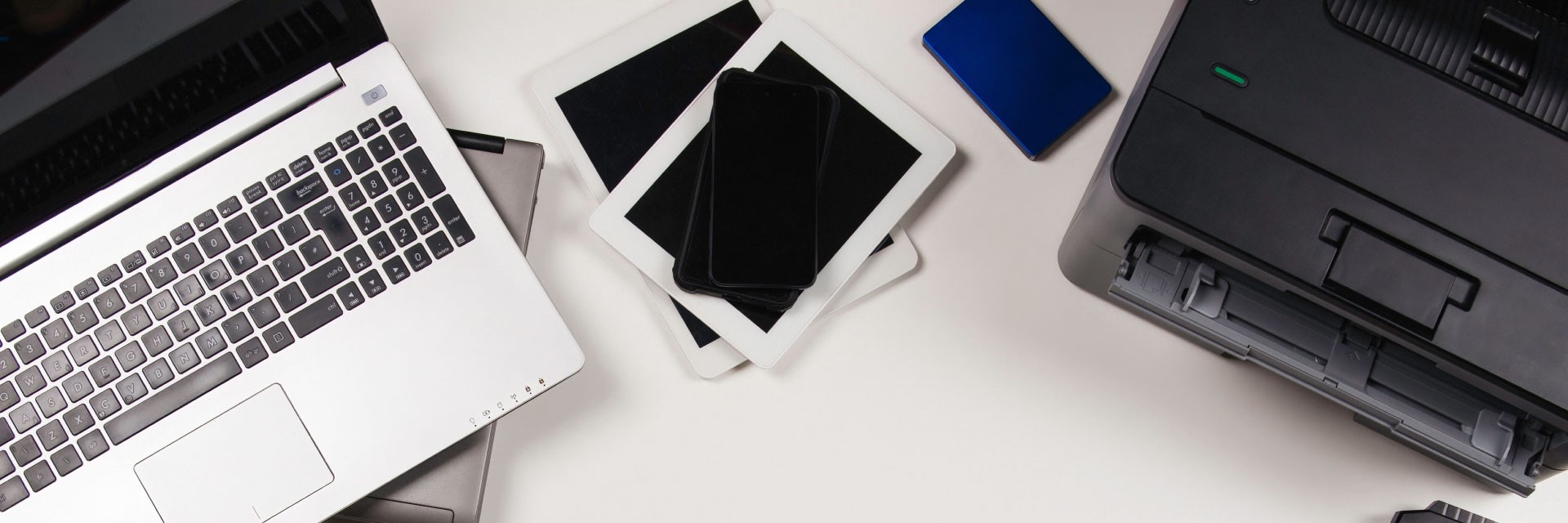Our department proudly supports the Cal State LA campus and welcomes the greater Los Angeles community. Whether you're a faculty member, a small business, or a community organization, we’re here to serve.
Spotlight

Campus Surplus Auction
Public Surplus: Government Surplus Auctions
Bid on auctions for California State University, Los Angeles (CSU) Surplus
Department Details
Functions include providing accurate accounting of the acquisitions, controls, transfers, and dispositions of the property for the University and its auxiliary organizations. Services include tagging equipment, performing inventories, and conducting sales of surplus equipment. The unit is responsible for the consistent application of relevant controls, policies, procedures, and guidelines from the Chancellor’s Office.
Internal Property Audits
The Property Management will coordinate all property audits with campus departments to ensure that all transactions are accurate and timely. Campus departments will be notified prior to the audit.
The Property Management reserves the right to conduct periodic audits without prior notification as needed in order to ensure that laws, regulations and contractual requirements are being met.
The Property Management will forward the audit findings to the Department Property Officer and the Appropriate Administrator. An audit summary report will be provided to the AVP of Finance.
External Property Audits
The CSU Chancellor conduct broad, procedural, audits on a regular basis. These audits may be property-specific or include property-related transactions as part of other system audits.
The purpose of these audits is to determine whether the policies and procedures which reflect government, other sponsor and Cal State LA requirements are documented, and established standards are met. Successful completion of these audits is critical to ensure appropriate systems controls are in place to mitigate financial or compliance risk as well as continued approval of Cal State LA property management system.
The University acquires property through the following various methods:
- Purchase
- Donation
- Inter-Agency Transfer
Purchase acquisitions are made via purchase order or procurement card. Acquisitions of property purchased fully with University Funds are deemed University property. Acquisitions purchased fully with Foundation or other auxiliary funds are not deemed University property. When a purchase of an inventory item is made by the University and an Auxiliary, ownership will be determined by the Property Management with the department and auxiliary.
Donations are acquired per the University Advancement and require submittal and approval of the Proposed Acceptance of Gifts in Kind. Contact University Advancement if you have any questions regarding the Gift-In-Kind Policy.
Data sanitization is the process of deliberately, permanently, irreversibly removing or destroying the data stored on a memory device. These memory devices include, but are not limited to, the following: computer hard drives, magnetic disks, flash memory devices, CDs and DVDs, PDAs (e.g., Palm Pilots, Pocket PCs, and Smart phones), Zip disks, and USB storage devices (e.g., flash drives, iPods, and portable hard drives). A device that has been sanitized has no usable residual data remaining and even advanced forensic tools should never be able to recover erased data.
All memory devices containing protected data must undergo data sanitization before relocating, reassigning, donating, or disposing of the device. Following are the currently recommended data sanitization tools.
Per the Information Security Management and Compliance Electronic Data Sanitization Verification, all electronic data must be properly sanitized prior to release of custody.
Data Sanitization Verification by the department is required by the Property Management for all media storage devices which are surveyed. The department is to certify and specify the media sanitization process per line item and attach a copy of it to every Property Movement Form and Request for Survey Form containing any of the above mentioned media.
For electronic media devices that cannot be sanitized, contact IT Security and Compliance (extension 3-4534).
The University Asset Management database is the official property record for inventoried items and is maintained by the Property Management. The Property Management retains property forms and reports per CO Executive Order 1031 and Records Retention & Disposition Schedules.
For inventory items, campus department property officer are responsible for maintaining the department property movement and off-campus loan form. These records are to be available upon request from the Property Management and internal/external auditors.
Property Management will provide campus departments with a current inventory list from the Asset Management database on a quarterly basis.
The Property Management will conduct an independent physical inventory of assets for each department to ensure control and disposition of assets. The Property Management physical inventory schedule will be based on a three-year cycle.
At the beginning of a Fiscal Year, the Property Management will contact the appropriate administrator, for departments identified for the physical inventory for that specific fiscal year, to determine the specific timeframe to conduct the physical inventory.
Campus departments will be notified prior to the Property Management conducting the physical inventory. The Property Management will forward an email notification to the appropriate administrator. The notification will include the listing of inventory and the scheduled timeframe of the physical inventory. The Property Management will coordinate the physical inventory with the department property officer.
Upon completion of the physical inventory, the Property Management will forward a preliminary inventory report to the department property officer identifying any discrepancies. Any assets on the inventory listing which are not found by the Property Management or any assets found by the Property Management but not currently on the inventory listing will require submittal of the appropriate documentation as defined in the Property Management procedures. Upon resolution of the discrepancies, the Property Management will forward a final inventory report to the department property officer and the Appropriate Administrator. A physical inventory summary report will be provided to the AVP of Finance.
All inventory (capital equipment and sensitive items) is tagged by the Property Management:
- An acquisition cost of $5,000.00 or more, with an estimated life greater than a one year and not permanently attached into University buildings.
- Sensitive equipment of $500.00 or more, with an estimated life greater than a one year and not permanently attached into University buildings.
For inventoried items delivered directly to a campus department, the campus department is to contact the Property Management to coordinate tagging of the item. A Property Management representative will inspect and tag the inventoried item at the department location. The campus department is to provide acquisition information to the Property Management (Purchase Order/Procurement Card/Proposed Acceptance of Gifts in Kind) and the planned location of the item.
All inventoried items delivered to the Distribution Center will be tagged and recorded in the University Asset Management database prior to being delivered to the campus department. The delivery location will be recorded as the initial location of the item.
Upon the request of a campus department, the Property Management will tag and record property that the department has deemed as a sensitive item, but does not meet the criteria of capitalized equipment or sensitive item per the established Property definitions.
The University is not responsible for personally owned equipment. The Property Management recommends removing personally owned equipment from campus. For personal equipment that is on campus, the Property Management requires the following precautions:
- Obtain written approval from appropriate administrator. A copy of the memo must be forwarded to Asset Management prior to bringing the equipment on campus.
- Faculty and staff employees who keep privately owned property at the University should label those items to indicate personal ownership.

